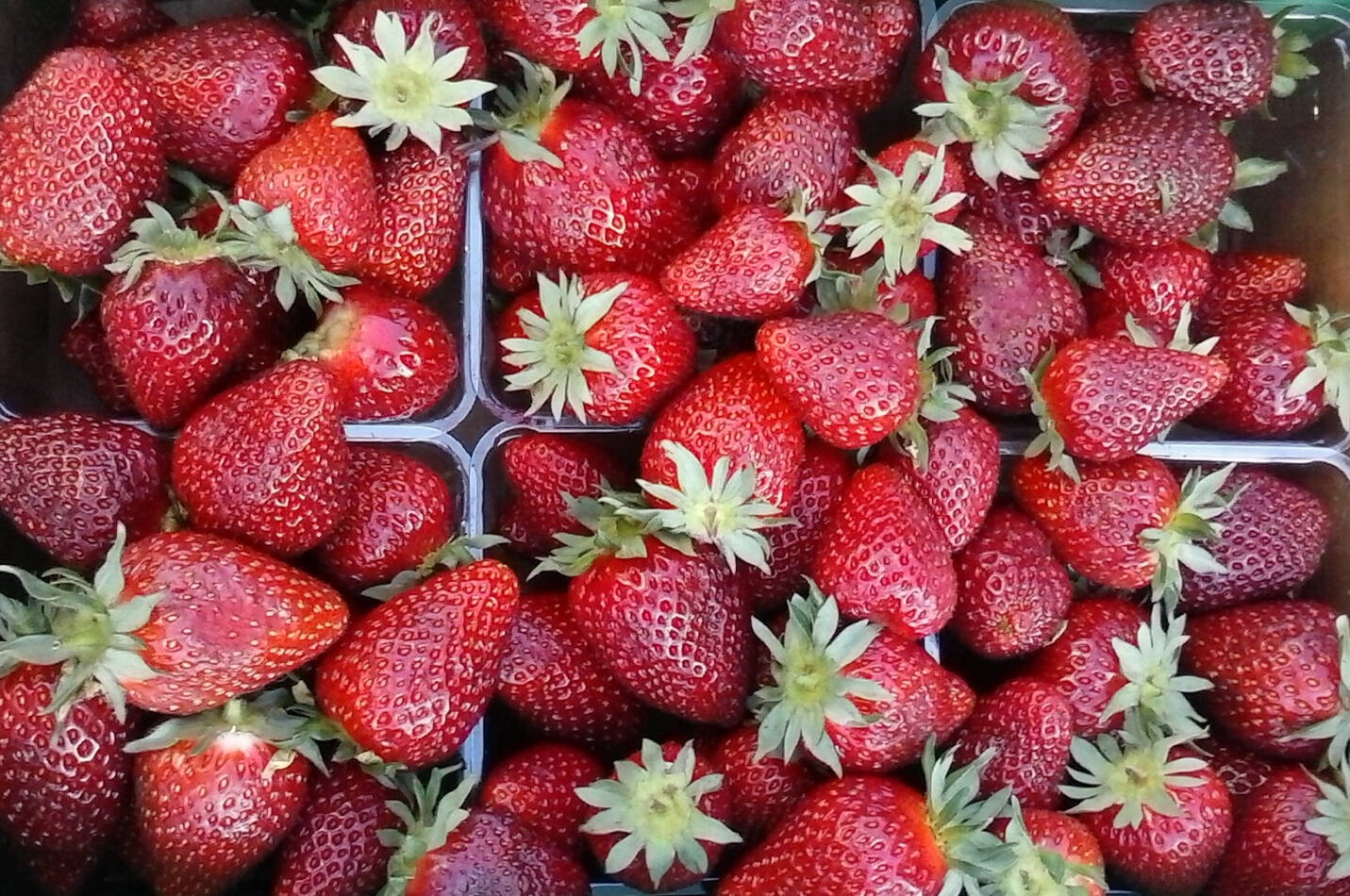Although the harvest of strawberries, raspberries, blackberries and blueberries is largely over for the season, continued care of your berry patch through the fall and winter will minimize plant loss and ensure a good harvest next year.
The necessary care depends on the type of berry. (See below.) A few generalizations can be made. All berries benefit from the removal of fallen leaves and decaying fruit from the planting. Compost only disease-free vegetation; burn or discard any that is questionable.
Most berry plants develop next season’s fruiting buds in late summer or early fall (that is as the days get shorter and the temperatures cool). Make sure your berries plenty of water during this time, at least 1-2 inches of water each week.
Do not fertilize your berries again until next spring; applications of nitrogen in late summer and fall can stimulate growth that is prone to winter injury.
Strawberries
After temperatures have dropped below freezing, apply 3-5 inches of organic mulch such as straw or pine needles on top of your strawberry planting. If you apply mulch before the first frost, you will create artificially warm conditions, and your strawberry plants might start growing instead of going dormant.
In spring, remove the mulch when your strawberries show signs of growth such as new leaf emergence. If frost threatens while plants are in bloom, cover them with row cover or old sheets. Put the cover on in the early evening and remove it in the morning once the risk of frost injury has passed.
Early spring is also a good time to clean up the strawberry planting. Remove dead and damaged leaves by cutting them off at the base. If you have not consistently removed runners (horizontal stems that produce daughter plants that can crowd the planting), thin plants to 4-6 inches apart. Remove the oldest and weakest plants and any that appear to be diseased.
Raspberries
After the harvest, the second-year canes that bore fruit die. Remove second-year canes in late summer or fall.
Second-year canes are woodier than the first-year canes with a silvery-brown coloring. They will have yellowish leaves and remnants of flowers and fruits the entire length of the cane. In contrast, first-year canes are green and smooth and will have darker green leaves. Cut the second-year canes off at soil level.
NOTE: Fall-bearing raspberries produce fruit at the top of first-year canes in the fall. Remove only the portion of the first-year cane that fruited, not the entire cane. This type of raspberry will bear fruit lower down on these same canes next summer.
During late winter, remove all weak, broken, diseased and insect-damaged raspberry canes and narrow the rows to 12 inches wide.
Blackberries
Like raspberries, second-year canes of blackberries start to die after harvest and should be removed.
For trailing blackberries only (such as Marionberry and Olallieberry): After you have removed the second-year canes, trellis the first-year canes. If you live at higher elevations (above 500 feet) or in more exposed areas, leave the first-year canes on the ground throughout the winter. Protect the canes with straw and train them onto the trellis in late February after the threat of severe cold has passed.
For erect and semi-erect blackberries only (such as ‘Chester Thornless’ and ‘Triple Crown’): In early spring (before bud break), shorten lateral branches to 18-30 inches to make the vigorous canes more manageable.
Blueberries
Blueberries have superficial roots. For cold protection, mulch the plants with bark or sawdust. Blueberries in pots are most susceptible to winter injury because the roots are more exposed. Bury the containers in the ground or wrap them in a blanket or bubble wrap for protection.
If you have had problems with mummyberry, a fungal disease that causes new leaves and flowers to wither and berries to shrivel and turn white (called mummies), take the following steps to control the problem:
• Remove the mummies from the planting and discard them. Do not compost these diseased berries.
• In the fall cultivate the soil about an inch deep around the plants to bury any mummies.
• During the winter, apply 2 inches of sawdust to prevent emergence of fruiting bodies.
• In early spring, rake the soil around your plants to destroy any developing fungal fruiting bodies.
Although blueberries can survive temperatures well below zero (to -20 or -30 degrees), heavy snow can damage the bushes by bending and breaking their branches. Remove snow before it freezes to limbs and branches by gently brushing the branches upward with a broom. Do not attempt to remove ice encased on branches; let it melt naturally.
Individual blueberry canes are most productive when they are 3-4 years old. Productivity declines significantly thereafter. Pruning enhances the growth of new canes and removes older canes that are no longer productive.
Prune your blueberries in late winter because plant structure can be seen more clearly and healing of wounds is better. See youtube.com/watch?v=AvoMx4rcRfs for more about pruning blueberries.
Don’t wait until next spring to provide the care your berry patch needs. Steps taken in fall and winter can greatly improve the health of your plants and result in a much better harvest next growing season.
Jeanette Stehr-Green is a WSU-certified Clallam County Master Gardener.


